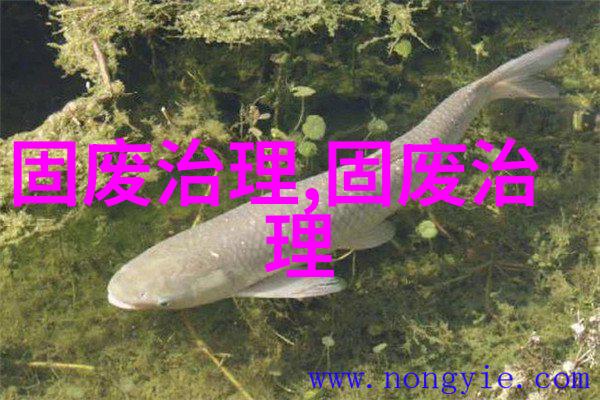工业废水处理工艺有哪些从物理化学到生物的奇妙转化之谜
在当今这个科技日新月异的时代,随着工业生产的发展,废水问题也愈发突出。如何高效地处理这些污染物丰富的废水成为了一个头疼的问题。为了解决这一难题,一系列先进的工业废水处理工艺应运而生,它们不仅能够有效去除污染物,还能回收利用资源,从而实现了节约和环保。

物理法治化与沉淀技术
首先是物理法治化,这种方法主要通过物理手段来去除或降低废水中的污染物含量,如油脂、悬浮固体等。其中最常见的一种是油罐式分离设备,它通过接触作用将油脂分离出来,然后再进行进一步的净化处理。

此外,沉淀技术也是一个重要的手段。这项技术依靠对流或静力作用,使得悬浮颗粒(如泥浆)聚集在底部形成一层,而清澈液体则被抽取用于后续使用或排放。在现代工业中,沉淀池通常配备有适当大小和形状的机械器具,以便更有效地捕捉和移除悬浮固体。
化学法修复与氧化还原反应

化学法则是另一大类用于工业废水处理的一般工艺。这种方法涉及到添加各种化学药剂来改变污染物在环境中的状态,使其成为易于去除或者直接转变为无害形式。例如,在酸碱性调整中,可以通过加入氢氧化钠(NaOH)增加pH值,从而使某些重金属离子以较容易溶解形式存在;反之亦然,当需要降低pH值时,则会使用盐酸(HCl)。
此外,在化学氧化过程中,对于含有有机质的大量作业产生的一些强腐蚀性的无机酸,如硫酸、磷酸盐,以及某些挥发性有机合成产品,可采用催化剂助推反应速率提高。此类反应包括生物活性辅助氧气释放以及过渡金属催化剂介导下的选择性羟基代谢等。

生物工程应用:微生物菌群与生态平衡
最后,不可忽视的是生物工程领域对于环境改善所作出的贡献。在这里,我们面临的是利用微生物菌群及其代谢途径来降解特定类型污染物的一个挑战。一旦建立起适宜条件下优良微生物菌群,就可以促使它们进行自我繁殖并逐步消耗掉部分甚至全部对环境造成负面影响的人造危害因素,比如一些细菌能将多余碳源转变为肥料供农田用,同时还能减少二次空气污染。

当然,在这方面还有另一种更加隐蔽但同样非常关键的手段,那就是维护一个健康稳定的生态系统平衡,即“自然恢复”技巧。这意味着寻找尽可能少干预自然现象,让本身具有整治能力的地球自己解决问题。在这个意义上,有时候只需简单地重新引入一定数量符合该地区特定需求的小型鱼类、昆虫或其他小动物至受损区域,并让它们开始执行他们天赋自我调节功能就足够了,因为它们作为食草者,无意间就会帮助清理周围区域内剩余残留垃圾,不但不会破坏环境反而会带动整个系统向更健康方向发展。
总结来说,Industrial waste water treatment is a complex process that involves various methods and technologies to remove contaminants, pollutants, and other substances from industrial wastewater. These processes can be broadly classified into three main categories: physical, chemical, and biological methods. Each method has its own unique advantages and limitations depending on the type of pollutant present in the wastewater.
Physical methods include sedimentation, filtration, and flotation. Sedimentation is a gravity-based process where suspended solids settle at the bottom of a tank while clear water overflows to another tank for further treatment or discharge. Filtration uses filters with specific pore sizes to trap suspended particles larger than the pores while allowing smaller particles to pass through. Flotation uses air bubbles to create buoyancy forces that separate lighter impurities from heavier ones.
Chemical methods involve adding chemicals such as coagulants or flocculants to wastewater streams to enhance particle aggregation or precipitation of insoluble compounds followed by separation techniques like sedimentation or filtration. Oxidizing agents are also used for treating organic pollutants through oxidation reactions.
Biological methods rely on microorganisms' metabolic activities for breaking down organic matter into simpler compounds that can be more easily removed from the water stream via settling tanks (secondary clarification) followed by tertiary treatment steps such as filtration or disinfection before final discharge.
In summary, industrial waste water treatment is an intricate process requiring careful planning and implementation based on factors including pollutant composition, concentration levels, flow rates among others along with regulatory requirements governing acceptable effluent standards prior release back into environment after proper cleanup processes have been carried out effectively ensuring protection of human health as well as wildlife habitats & ecosystems alike so they remain safe & sustainable long-term future generations benefitting therefrom too!